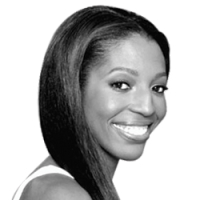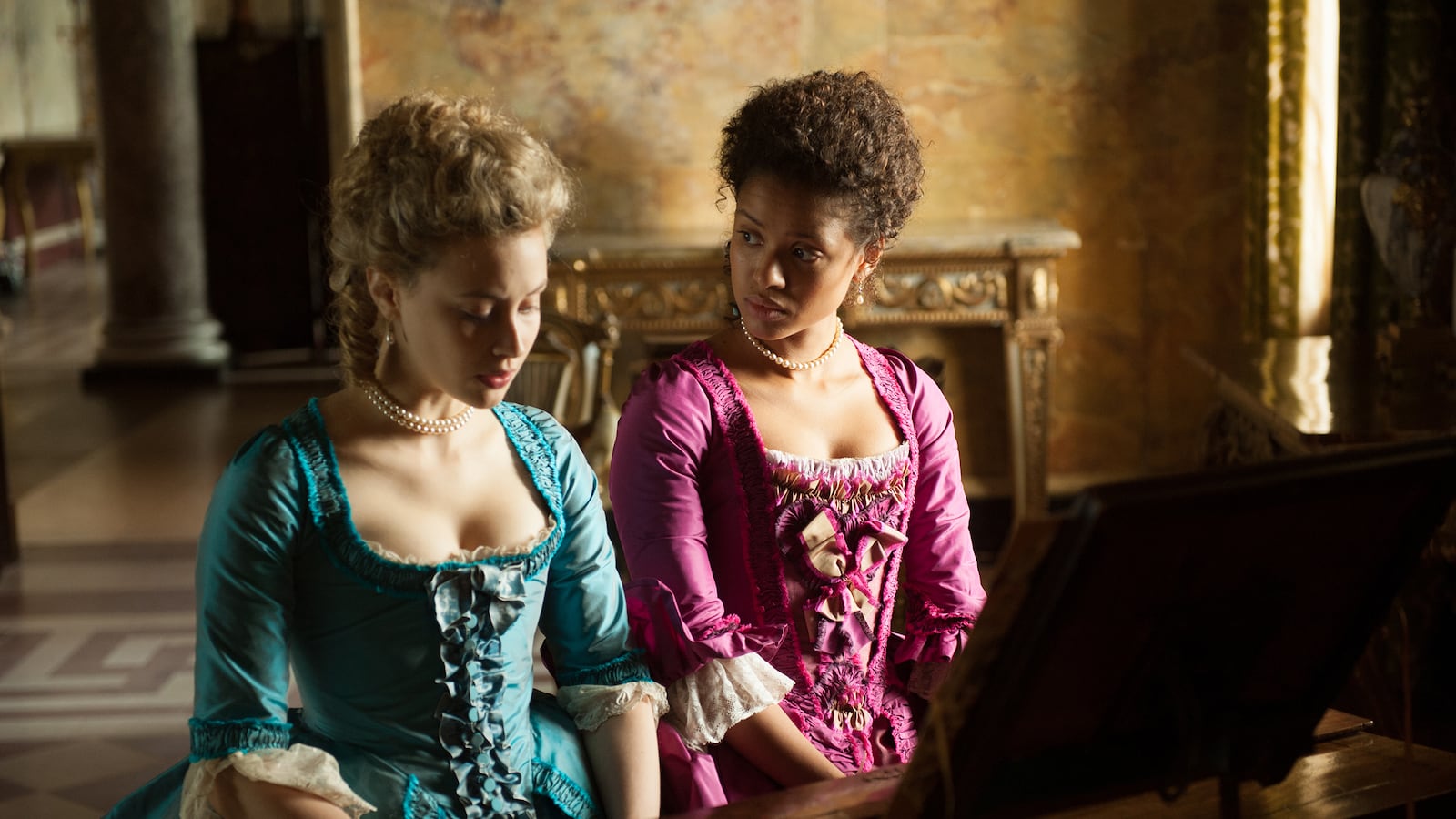The film Belle, which opens this weekend in limited release stateside, is inspired by a true story, deals with the horrors of the African slave trade, and its director is black and British. For these reasons, comparisons to the recent recipient of the Best Picture Oscar, 12 Years a Slave, are inevitable.

But there are some notable differences.
Among them, Belle is set in England, while 12 Years a Slave is set in America. 12 Years a Slave depicts—in unflinching detail—the brutalities of slavery, while Belle merely hints at its physical and psychological toll. But the most significant deviation is this: whereas 12 Years a Slave faced criticism for being yet another film to perpetuate the “white savior” cliché in cinema, in Belle, the beleaguered black protagonist does something novel: she saves herself.
“Belle marks the first film I’ve seen in which a black woman with agency stands at the center of the plot as a full, eloquent human being who is neither adoring foil nor moral touchstone for her better spoken white counterparts,” the novelist and TV producer Susan Fales-Hill told The Daily Beast.
Directed by the Amma Asante, the film is inspired by the 1779 painting of Dido Elizabeth Belle, a mixed race woman in a turban hauling fruit, and her white cousin, Lady Elizabeth Murray. The artwork was commissioned by William Murray, acting Lord Chief Justice of England, and depicts the two nieces smiling with Murray’s hand resting on Belle’s waist—a gesture suggesting equality, not subservience. While its artist is unknown, the portrait hung in England’s Kenwood House, alongside works by Vermeer and Rembrandt, until 1922.
The painting’s mysterious subject, Belle, was the daughter of an African slave known as Maria Belle and Admiral Sir John Lindsay, an English aristocrat. She was ultimately raised by Lindsay’s uncle, William Murray, the aforementioned Lord Chief Justice and 1st Earl of Mansfield, with many of the privileges befitting a woman of her family’s high standing. Since not much is known of Belle’s life inside the Mansfield estate, Asante and screenwriter Misan Sagay took some artistic license in dramatizing the dehumanizing racial prejudice their protagonist endured that even her social standing and wealth could not erase.
For instance, while not permitted to dine with the servants of her home since they were considered beneath her, she was also not permitted to dine with her family when guests were present since she was considered beneath them. This racial balancing act makes Belle one of the most genteel yet uncomfortable depictions of racism ever to grace the screen. Here, the racism isn’t as black-and-white—those providing Belle with her luxury attire, emotional affection, and protection from the racial brutality of the outside world also see her as a lesser being.
“For me, this point of view is so refreshing,” Gugu Mbatha-Raw, who plays Belle, told The Daily Beast. “I’d never seen a period drama like this with a woman of color as the lead who wasn’t being brutalized, wasn’t being raped, was going through this personal evolution but was also in a privileged world and articulate and educated. I just hadn’t seen that on film before.”
Indeed, Belle becomes empowered to challenge the white characters that view themselves as her savior on their veiled racism, which marks a welcome departure from one of Hollywood’s most enduring cinematic tropes: the white savior.
When it comes to race-relations dramas—and slavery narratives, in particular—the white savior has become one of Hollywood’s most reliably offensive clichés. The black servants of The Help needed a perky, progressive Emma Stone to shed light on their plight; the football bruiser in The Blind Side couldn’t have done it without fiery Sandra Bullock; the black athletes in Cool Runnings and The Air Up There needed the guidance of their white coach; and in 12 Years A Slave, Solomon Northup, played by Chiwetel Ejiofor, is liberated at the eleventh hour by a Jesus-looking Brad Pitt (in a classic Deus Ex Machina).
“I think it’s a trope that has certainly been seen in Hollywood films for decades,” longtime film critic Laurence Lerman, formerly of Variety, says. “Think about the white teacher in the inner city school. The Michelle Pfeiffer one [in Dangerous Minds]. The Principal. Music of the Heart, where Meryl Streep was a music teacher. Wildcats. I think these stories probably read well in a pitch meeting: ‘Goldie Hawn coaching an inner city football team.’”
But, as he went on to explain, the execution often leaves something to be desired and doesn’t always reflect well on the communities it depicts—ones rooted in chaos that need a white savior to restore order. Lerman further noted that this cinematic trope is not limited to the depiction of inner cities or black people. Of the Last Samurai he said, “They make it look like Japan would not have made it out of the feudal period without Tom Cruise.” And the worst offender, in his opinion, is Dances with Wolves. “The west wouldn’t have been tamed and we’d have no civilization if Kevin Costner didn’t ride into town,” he says sarcastically.
The issue, according to Lerman, is more complex given the nature of Hollywood and the various power structures at play. While there are plenty of important stories to tell featuring people of color, there are only a small number of people of color in Hollywood with the clout to get a film green-lit—especially since we’re living in an age where international box office trumps domestic. This troubling disparity often results in a white star needing to be featured in a film with a predominantly minority cast to secure the necessary financing—as was the case with Pitt’s appearance in 12 Years A Slave, a film produced by his company, Plan B. And who can forget the controversy over the outrageous Italian movie posters for 12 Years A Slave, which prominently featured the film’s white movie stars—Pitt and Michael Fassbender—in favor of the movie’s real star, Chiwetel Ejiofor.
Without ruining the film for you, part of what makes Belle so refreshing is that its portrayal of black characters, namely Belle, is one of dignity. They aren’t the typical uneducated blacks you see in films that need to be shown the light by a white knight, for they’re blessed with more intellect and class than many of their white subjugators, who soon come to realize that Belle, through her grace and wisdom, is their savior.
“Her family thought they were giving her great love, but until she’s able to take that freedom for herself and find self-love and feel comfortable in her own skin, that’s when she’s ready to challenge them,” says Mbatha-Raw. “It just felt like a story that needed to be told.”






